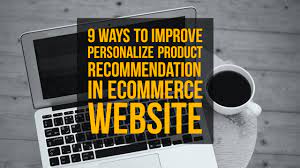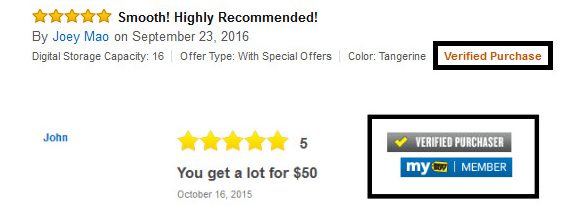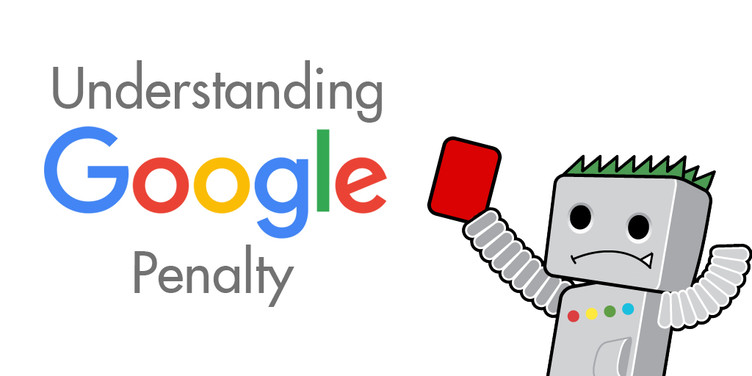
eCommerce is my favorite subject and when it comes to conversion optimization, I enjoy working on usability testing part to increase the conversion rate of the website. Recently I privileged to participate in EcomChat which is an ecommerce & digital marketing networking group comes together every Monday for a live twitter chat. Last Monday, the topic was about smart product recommendation and the discussion was very insightful. As always @JamesGurd has nicely concluded the Ecomchat by sharing important takeaways from the event. In this article I will be talking about all different takeaways from the Ecomchat with detailed explanation and live examples. Here we go!
According to this infographic released by Monetate, the smart product recommendations can increase your revenue by up to 300%, improve the conversions by 150% and it also to help boost the average order value by 50% .

But the biggest question is, does it work for everyone? Does it gives same result for all eCommerce business? Obviously the result is totally depending upon how you are implementing personalize product recommendation and the type of your business. As same strategy may give different result to different businesses, first understand and test the feature best suited your audiences and accordingly make the implementation. Lets go through each of those takeaways and see which one (or more) can work for your eCommerce business.
#1 Promote The Accessories
As done by various Ecommerce websites, the related accessories must be promoted along with the products. As shoppers mostly purchase relevant accessories or the recommendation like this will remind them to buy those accessories. Promotion of right accessory with a product on Sale is an important tool to gain more profits. Do mind that only relevant stuff should be promoted to attract the buyers. It is very common product recommendation practice being followed by most of the popular ecommerce websites. Amazon like others, displays its products using models who are styled with a range of other products available on the site. This not only shows the customers how the product actually look on a real person, but is also a useful way of suggesting other related items the customer might want to buy.

I recently searched for Dell Laptop on Amazon and at the end of product specifications, I found products depict in above screenshot. Look at the products and its title closely which refers to – “Customers who bought this item also bought”. This way eCommerce portals can push their customers to buy other stuffs as well.
#2 Match The Business Needs
Using the search-related data a shopping website should try to match the business & customer needs. According to Dan, one should recommend the relevant products with very high margin. It serves two main purposes one they introduces closely relevant products with high profits on sale, second they provide a variety available in the budget of a shopper. In this way they earns both the profit and a buyer for their products. This thing can be easily noticed on any small or big eCommerce websites or on their application.
#3 Matching The Activity To User Needs
This is very common in regular shops hence in the Ecomm sites this thing is equally effective. In this type of personalized product recommendation, the website search related data will do the job. Display the products on the main page when it is the right time to attract the buyers. Currently Black Friday, Cyber Monday and Holiday Sales is going on, so all eCommerce flooded their home page design with banners and huge discounts.
Let’s find out how Amazon, Macys and QVC – 3 giant ecommerce retailers showing black friday banners all over the website.



#4 Social Proofs Are Must
Use of verified reviews done by verified customers can make you earn more money. Almost every Ecommerce website is using this method and it is must to have it on a portal. So go social and share the reviews to assure the customers for a genuine and a quality product. Shoppers trust other shoppers up to 12x more than the brand or marketing messages. A review done for a verified purchase makes other shoppers to try new brands and it makes them easy to shop from internet.

And also be well stocked or else your shopping site will be used only to read the reviews and the shopper will go for another website which will affect your business.
@ecomchat #Ecomchat Ensure you have your best rated items in stock. If you don’t, customers will thank you for your reviews & shop elsewhere
— Jim Haysom (@jimhaysom) November 21, 2016
#5 Test To Find What Works
@JamesGurd a lot of “normal” size businesses don’t have access to the nice AI tools to bundles and fixed rec’s are adequate #ecomchat
— Tim☕️(@ChinaShopBull) November 21, 2016
You can’t predict everything but you can go for testing the trend and minds of your shoppers. Never afraid of trying new things, try to go with some genuine test results. According to Tim, you can bundle multiple products in one group and highlight the discount / sale / offer price on that bundle. This way, you can sell multiple products to same buyers.
First understand your target audience and visualize their buying behavior, that will help you to start with your experiment to acquire those audiences. Just take an example of Amazon prime, providing shipping in 2 days and 30 minutes early access of thousands of deals. This will definitely attract buyers to place orders which are available to only prime members (even if they don’t require those products) will directly increase the sales.

Testing is a good practice as you never know what works best for whole audience. Keep it simple and try to make the segment to give unique experience to your website visitors & don’t shy to take suggestions of your users. The data based on your user’s experience will helps you to acquire more business from the smart product recommendation. Start simple and go further as lot of small businesses don’t have access to right AI tools, so bundles and fixed recommendations are adequate.
#6 Try To Understand And Isolate Gift Purchase
Amazon using “This is a Gift” and other websites like QVC also do manage the gifting related purchases as special recommendations. A good understanding can fetch you more bucks and more visitors to your website. Currently many ecommerce portals providing detailed gift guide for every category which helps users to buy most popular gifts for someone. Apart from that they also provides the list of trending gifts in various categories that directly impact the buying decision of your users as no one want to spend time on reviewing 100s of products to make a gift.

#7 Improve The Relevance
Merging the data sources will give great result when implemented smartly, for example – Understanding what do they buy in stores? Or which items gets more returns / complaints etc. Including the product gets more orders and excluding the products get more returns will greatly impact the overall performance.
#8 Increase Your Sales With Personalization
@ecomchat We should not use data to drive segmentation any more. Personalisation for product order should be one-to-one #ecomchat
— Manley🌐(@LordManley) November 21, 2016
Sending personalized product recommendations to your customers increases the sales. If you are using smart personalize product recommendation engine, within a few clicks you can detect the purchasing patterns of your visitors and buy recommending relevant products, you can encourage them to make an orders. This will help you to target right people with the right products. And you can learn more about each customer’s individual purchase history and recommended items by viewing their subscriber profile. Every E-comm website regularly sends the offers and deals related to the recent searches done by a user to there respective e-mail Ids.

We recently bought some books from Amazon and next day while surfing Amazon again, it started displaying products with title – “Inspired by Your Shopping Trends”. This kind of practice will make your ecommerce website unique and will help you to increase the sales.
#9 Go For Product Research and Right Pricing Strategy
For an eCommerce website, site search data is very helpful to know what are the latest trends and demands from the users. Use this data to go for quality and the quantity apt for sale. Keep your stocks according to it as the requirements changes with seasons and festivals. By using site search data one can identify the price ranges the customers are looking for; If your customers are searching for low-priced products, offer suitable range of products. Also work on price comparison with your competitors selling same products to reduce the bounce rate and users will only buy after comparing the price from multiple sellers.
How Do Product Recommendation Engines Work?
The eCommerce product recommendation is a combination of different sets of data. This data set includes customers’ search queries, shopping history, geographic location, and products viewed. Hence, the product recommendation engines work on this algorithm to deliver a personalized shopping experience to the customer. The product recommendation ensures the use of the algorithm to filter out and generate a product catalog for customers’ needs.
These recommendations make the shopping experience personalized to the customer’s preference. It ultimately increases the chances of purchase and driving sales to the eCommerce. The filtering of products personalizing to the user depends on three routes:
● Collaborative Filtering: In collaborative filtering, the recommendation engine starts by showing trending and best-selling products. Once the customers start searching for products the recommendation engine creates a customer profile similar to existing parallel customers and gives recommendations accordingly.
● Content-based Filtering: In content-based, recommendations are given based on the previous shopping behavior of the customer. It uses data like purchase history, age, social habit, location, and browsing device of the customer.
● Hybrid Filtering: Just like the name, hybrid filtering is a combination of collaborative and content-based filtering. Hence, recommendations are made using both previous shopping behavior and user preference profile.
On Your Ecommerce Site, Where to Include Personalized Product Recommendations?
One of the prime focal points of web product recommendation is the placement of ads on your website. The appropriate deployment of product recommendations requires detailed customer data. The data is used to decide the placement of recommendations on the webpage where the customer interacts with it the most. The various places for product recommendation deployment are:
- Product Page: Product pages offer detailed information about the product. The product pages are best to keep the social proof for your products. When a visitor lands on a product page, their purchase intent is high. The webpage show web product recommendation like, ‘similar products’ or ‘frequently bought together. It increases their chances of buying more than one product.
- Category Page: Category pages collate the relevant products. They are also the magnet to drive the range of your products. The customers can narrow down their searches into subcategories through category pages. These are the best places to give recommendations like ‘Bestseller’, ‘Featured’ or ‘Bought together products’.
- Shopping Cart: The shopping cart page is the last chance to make the customers buy additional products. The personalized product recommendation on this page allows reminding the customer’s products they have overlooked.
Each strategy has its own benefits and if implemented rightly, it will not only improve your website user experience but also will help to increase overall sales. If you already enjoying the benefits of this personalized & smart product recommendation, do share your experience here by comment.
Contact Form Popup
Boost Your Business Now
This will close in 0 seconds
apply now popup
Apply Now
This will close in 0 seconds
Get free audit popup
Get Free Google Ads Account Audit Worth $999
This will close in 0 seconds

